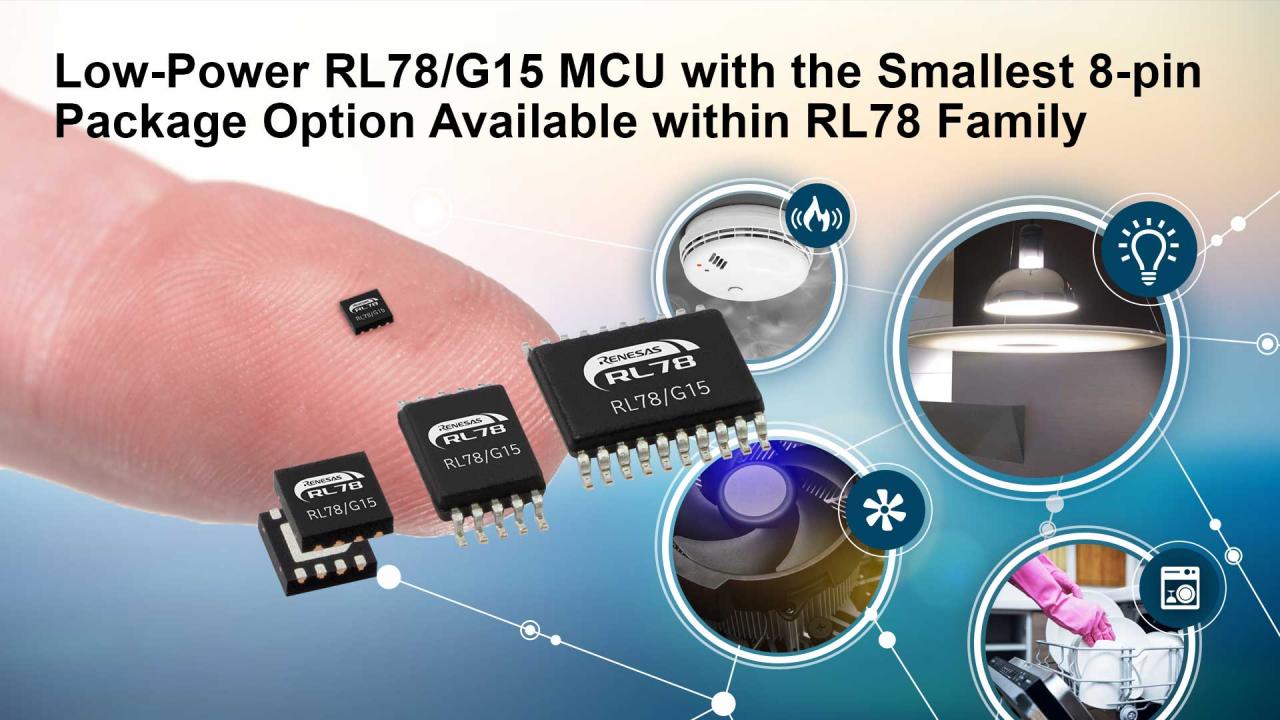Microcontroller units (MCUs) are the brains within billions of smart electronics devices. Advances in miniaturizing MCU chips are allowing manufacturers to keep products small while packing in more capabilities. Compact, sophisticated MCUs drive innovation across the embedded systems powering our daily lives.
Enabling Tiny Wearable and Portable Devices
Early wearable devices relied on bulky MCUs that limited miniaturization. But highly integrated System-on-Chips (SoCs) now provide robust processing in tiny footprints. For example, the Nordic nRF5340 high-end wireless SoC measures just 3.8 x 4.4 mm.
This miniaturization is enabling sleek smartwatches and fitness trackers. Hearing aids with powerful noise cancellation algorithms now fit imperceptibly in the ear canal. And compact wireless earbuds support advanced music and call features.
As Harry Sverdlove, CEO of EDGE Impulse, commented: “Shrinking MCUs allow us to build remarkably tiny devices with significant ‘smarts’ based on modern machine learning.”
Packing More Core Capability
In addition to physical size reduction, MCUs integrate more core capabilities on each chip. Where multiple MCUs were once required, a single advanced SoC now provides application processing, memory, connectivity, security, and real-time I/O.
For example, the STM32U5 integrates advanced Arm processing, multiple physical interfaces, security accelerators, and signal conditioning on a single die. This consolidation saves board space and cost in connected devices.
According to Samer El-Haj-Mahmoud, CEO of Bayshore Networks: “By integrating more functionality on-chip, modern MCUs reduce complexity allowing faster development of sophisticated embedded products.”
Optimizing Pin Counts
Early MCU packages required high pin counts to connect all the internal peripherals. This drove larger chip sizes. Newer MCUs slash pin counts through serial interfaces like SPI that maximize periphery connectivity using just a few shared pins.
For example, the MicroChip AVR DB family MCUs offer over 200 configurable peripherals with packages down to 8-pin SOTs. The small footprint is ideal for space-constrained applications.
As Carlo Tokarski, Director of Strategic Marketing at Microchip, explained: “Innovative pin multiplexing and serial interfaces let our modern MCUs support dozens of peripherals in tiny, cost-effective packages.”
Leveraging Advanced Process Nodes
Shrinking MCU geometries to advanced process nodes like 22nm enables dramatic size reductions along with lower power operation. More digital logic fits on each mm2 of silicon. And smaller transistors run at lower voltages.
For example, the Samsung Exynos i-SoC for wearables utilizes 22nm process technology to operate at under 1V while providing powerful application processing in a compact footprint. The tiny integrated SoC enables full-featured wearables.
Debaprasad Dutta, Senior Director at Samsung Austin Semiconductor noted: “Moving MCUs to leading-edge process technologies is key to providing powerful and efficient smart device engines.”
Simplifying Board Layouts
Highly integrated MCUs simplify circuit board layouts by consolidating functionality. With connectivity, memory, and critical I/O on-chip, less space is needed for peripheral components.
Simple low-pin-count MCUs also facilitate compact single-layer PCB implementations. This avoids the cost and complexity of multilayer boards in many connected devices. Streamlined MCU layouts accelerate design turns and shrink production costs.
Jeff Bader, Vice President of Technology at Rigado, explained: “Leveraging tiny system-on-chip MCUs lets our customers build highly capable wireless sensors on amazingly simple PCBs.”
Enabling Compact Modular Electronics
Small MCU modules are accelerating development and enabling compact form factors through modular designs. Developers stack and interconnect MCU boards to build capabilities without designing full custom PCBs.
Standardized modules like Seeeduino LoRaWAN 2.0 embed powerful MCUs on tiny boards with built-in sensors, IO, and wireless. These compact modular building blocks simplify IoT device creation in a flexible package.
Roger Sun, Product Manager at Seeed Technology, said: “Our MCU modules pack tremendous functionality into a miniaturized format factor. These plug-and-play building blocks accelerate development.”
Driving Cost reductions
Consolidating MCU functionality also provides cost savings that make adding intelligence economical. Single compact MCUs reduce both component count and PCB footprint relative to multi-chip solutions.
Efficient advanced node technology further lowers MCU costs. This enables smart functionality in traditionally cost-sensitive products like appliances, toys, and industrial sensors.
According to Mike Demler, Senior Analyst at The Linley Group: “Shrinking MCUs continue to lower the barriers to adding sophisticated embedded intelligence across a range of products and industries.”
Enhancing Processing at the IoT Edge
Within the Internet of Things, small integrated MCUs allow more processing power to be distributed out to remote edge nodes. On-device data processing reduces bandwidth needs and improves latency.
Tiny machine learning optimized SoCs like the Ambiq Apollo4 enable local AI inferencing right on battery-powered endpoints like security cameras. This distributes intelligence beyond the cloud.
As Katelijn Vleugels, CTO at Roa Logic noted: “Highly efficient compact MCUs are key to pushing ML compute out to the distributed edge and unlocking the next level of IoT.”
Spurring MCU Innovation
The pressure to minimize MCU footprints while maximizing functionality continues to spur architectural and process enhancements. Advanced 3D stacking will further increase density. Innovations like near-threshold computing optimize efficiency. And new tooling accelerates the design of complex SoCs.
MCUs will also leverage increasingly heterogeneous multi-core designs tailored to application demands. And inherent security features will guard against embedded threats. The result will be continued MCU improvements to enable the pervasive smart devices surrounding us.
Gene Matter, Vice President at NXP Semiconductors, remarked: “It’s an exciting time in the industry as we find new ways to pack ever more intelligence into tiny secure MCUs powering trillion of devices worldwide.”
In summary, the remarkable miniaturization of microcontroller chips through integration, architectural optimization, and advanced process nodes is enabling ubiquitous compact and affordable smart devices. Sophisticated MCU innovation continues across the industry, promising a new wave of diminutive but highly capable smart products in the years ahead.


















